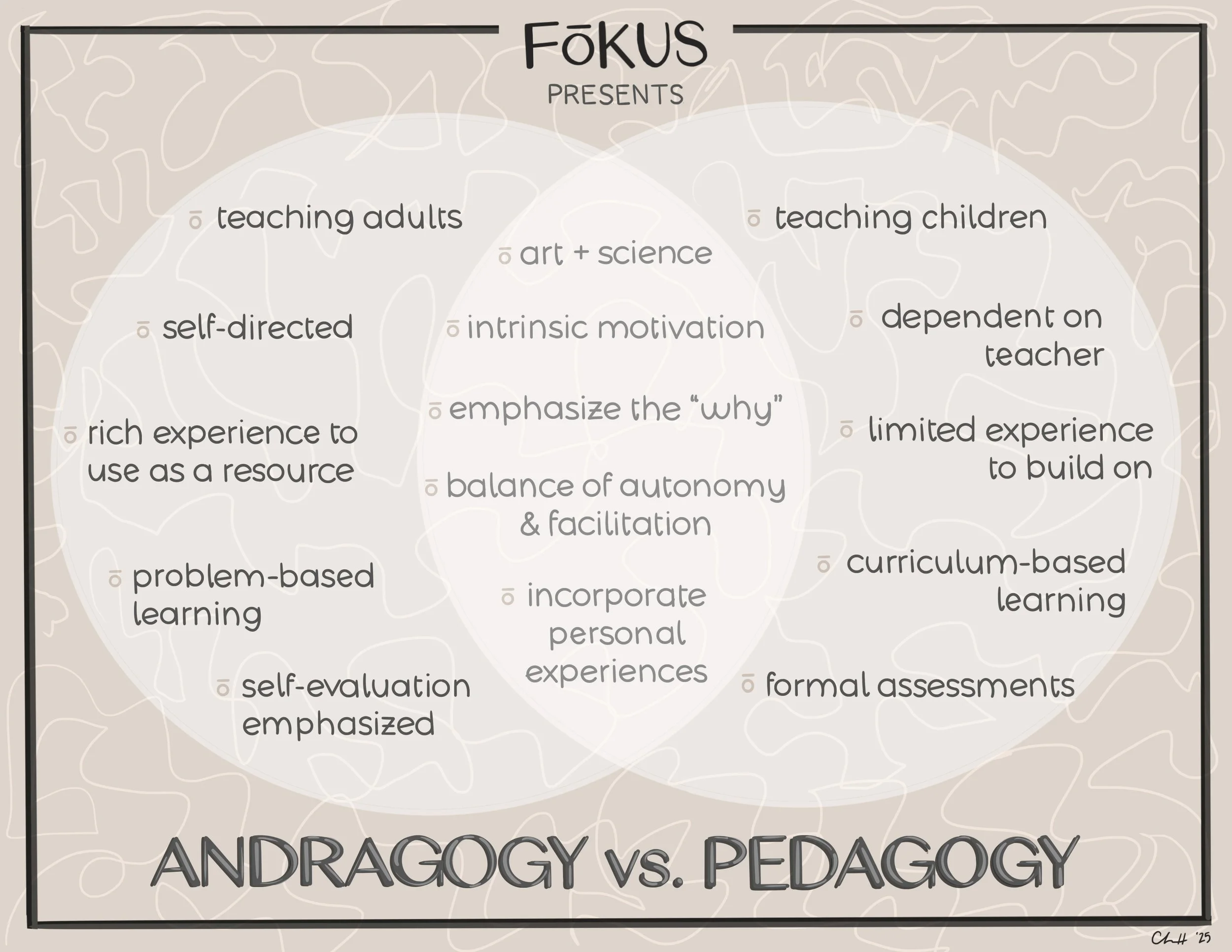
A SHIFT FROM PEDAGOGY TO ANDRAGOGY
Transitioning from Public Education to Instructional Design
Published on 2/20/2025

Hey folks! Former art teacher here, now thriving in Instructional Design at FōKUS. After several years in the classroom, I hit a wall—burnout had completely taken over. I sought a change and leaned on friends in the field for guidance. I soon realized my teaching skills translated seamlessly, especially when exploring the shift from pedagogy to andragogy. This journey sparked my deep dive into the world of instructional design, uncovering how pedagogy and andragogy shape the way we create learning experiences. Let’s explore!
Key Differences:
Teacher-Centered: The teacher is the primary source of information and controls the learning process.
Structured Curriculum: Learning follows a set path based on developmental stages.
Limited Learner Experience: Children rely on instruction rather than personal experience.
Formal Assessments: Progress is measured through tests and graded evaluations.
Pedagogy refers to the methods and practices used in teaching children.
Andragogy is the approach to teaching adults of various ages and backgrounds.
Key Differences:
Teacher-Centered: The teacher is the primary source of information and controls the learning process.
Structured Curriculum: Learning follows a set path based on developmental stages.
Limited Learner Experience: Children rely on instruction rather than personal experience.
Formal Assessments: Progress is measured through tests and graded evaluations.
The Overlap:
Focus on Meaningful Learning: Both pedagogy and andragogy emphasize understanding the why behind what’s being learned.
Motivation: While adults are often seen as intrinsically motivated, both age groups benefit from internal drives rather than external rewards like grades or punishments.
Personal Experience: Incorporating personal experiences enhances engagement and makes learning more relevant for both children and adults.
Beyond Memorization: Both approaches prioritize deep learning over simple memorization, fostering long-term understanding.
As I explored these concepts, one thing became clear—teaching, at its core, applies to all learners, regardless of age.
At the end of the day, I’m excited to compare my experience with Pedagogy to the new learning methods I’ll be facilitating. As I continue growing in this field, I look forward to discovering new ways to teach and connect with a different audience. My love for teaching kids will always be there, and seeing the overlap between these methods makes this transition into Instructional Design even more rewarding. I can’t wait for what’s ahead!
Have a topic that you want us to cover?


